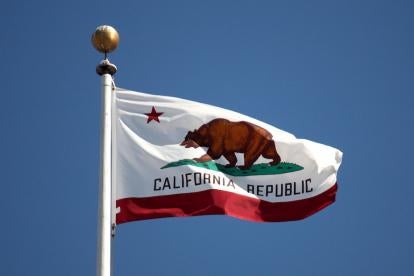Almost all California employers will soon be impacted by an impending expansion to the California Family Rights Act (CFRA) under SB-1383, which was signed into law by Governor Gavin Newsom on September 17, 2020. The CFRA amendment goes into effect on January 1, 2021, and dramatically changes the California employment leave landscape. The CFRA was originally modeled largely after the federal Family and Medical Leave Act (FMLA); however, the two laws contain significant differences, and these new amendments to CFRA expand the gap in many ways.
IN DEPTH
Among other notable changes, the new bill:
-
Expands CFRA coverage to employers with five or more employees (instead of 50 or more employees);
-
Includes additional “family members” for whom qualifying employees can take leave to provide care; and
-
Provides leave for active military duty (which was previously available under the FMLA but not the CFRA).
The following is a chart that summarizes the current CFRA rules in place as compared to the new CFRA rules taking effect on January 1, 2021.
|
Change to CFRA |
Detail |
|
Expanded Coverage to Small Employers |
Currently: The CFRA currently applies to private employers with 50 or more employees within 75 miles of the worksite, and public employers of any size. Effective January 1, 2021: The CFRA will apply to private employers with five or more employees, and the requirement that employees work within 75 miles of the worksite will be eliminated. As a result, the CFRA will apply to almost all California employers, including those who never had to comply with family and medical leave laws. |
|
Expanded Definition of “Family Member” |
Currently: The CFRA currently allows qualifying employees to take unpaid leave to care for a “family member” with a serious health condition. As currently defined, “family member” includes a minor child, parent and spouse. Effective January 1, 2021: The definition of “family members” will be expanded to include siblings, grandparents, grandchildren, domestic partners and adult children (as each is defined under the Act). Thus, employees will soon have more qualifying reasons to take CFRA leave. |
|
Employers That Employ Both Parents of a Child Must Grant Each Qualifying Parent Full Leave |
Currently: Employers who employ both parents of a child can limit the total amount of CFRA leave taken by the parents to bond with the child to a collective total of 12 workweeks. Effective January 1, 2021: Employers who employ both parents of a child must grant separate CFRA leave to each qualifying parent, either at the same time or back to back, depending on the employees’ requests. The new law also expressly repeals California’s New Parent Leave Act (NPLA), since SB-1383’s expansion to CFRA renders the NPLA redundant. |
|
New Leave Entitlement for Active Military Duty |
Currently: Under the FMLA, but not the CFRA, qualifying employees who need time off related to the covered active duty (or call to covered active duty) of an employee’s spouse, domestic partner, child or parent in the Armed Forces of the United States may be granted protected leave. Effective January 1, 2021: CFRA leave will be available for this purpose. |
|
Exemption Eliminated |
Currently: The CFRA allows employers to exempt the highest 10% earners where the employer’s refusal to grant CFRA leave is necessary to prevent substantial and grievous economic injury to the employer. SB-1383 deletes this exemption from the CFRA. Effective January 1, 2021: There will no longer be a 10% exemption option for employers. |
|
Potential Problems with Concurrent Use of FMLA |
Currently: Generally, employers covered by both CFRA and FMLA can require employees to use CFRA and FMLA leaves at the same time, such that a qualifying employee is only eligible for a total of 12 weeks of unpaid leave total under both laws. Effective January 1, 2021: This may no longer be the case in many situations, as leave may be available under only the CFRA. Since SB-1383 expands the definition of “family member” under the CFRA beyond the FMLA definition, the two laws are no longer synchronized. As a result, a qualifying employee who uses 12 weeks of leave available only under the CFRA could remain eligible for a full additional 12 weeks under the FMLA for a different qualifying reason. |
|
Pregnancy Disability Leave |
Currently: Time taken for pregnancy disability qualifies for leave under the FMLA but not under the CFRA. Effective January 1, 2021: Pregnancy disability leave for up to four months will be a right separate from the CFRA. This means a California employee with pregnancy disability could be entitled to pregnancy disability leave under the FMLA, separately under California law, and then entitled to additional leave under the CFRA for a different qualifying reason. |
Affected employers should take the following steps to ensure compliance in time for the January 1, 2021, CFRA effective date:
-
Employers who are newly covered by the CFRA (e., employers with between 5 and 49 employees) should familiarize themselves with the law’s requirements and implement a CFRA-compliant policy.
-
California employers previously covered by FMLA and CFRA should review and update their policies to conform with CFRA’s expansions. New or revised policies should be circulated to employees in advance of the January 1, 2021, effective date.
-
Affected employers should train human resources (HR) professionals responsible for reviewing and administering leave requests on their new or revised policies. This will help ensure leave requests are handled in compliance with the new requirements.
-
Affected employers should update the form Notice of Eligibility and Rights and Responsibilities and form Designation Notice, to be used starting January 1, 2021.




 i
i

